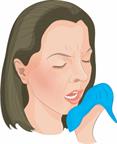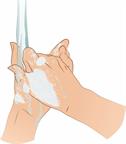Tuberculosis
Tuberculosis (TB) is an infection that usually affects the lungs but can affect other parts of the body. It is caused by bacteria. There are two forms of TB:
Active TB, also called TB disease. This means that you have TB symptoms and your infection can spread to another person (you are contagious).
Latent TB. This means that you do not have any symptoms of TB and you are not contagious.
Latent TB can turn into active TB, so it is important to get treatment no matter which form of TB you have.
What are the causes?
TB is caused by bacteria called Mycobacterium tuberculosis. You can catch the bacteria by breathing in droplets from a cough or sneeze from someone who has active TB.
What increases the risk?
You are more likely to develop TB if you:
Have human immunodeficiency virus (HIV) or AIDS.
Have diabetes.
Are older. Infants are also more likely to get TB.
Have an alcohol use disorder.
Use tobacco.
- Live in or travel to areas that have high rates of TB, such as:
India.
Indonesia.
China.
Philippines.
Pakistan.
Nigeria.
South Africa.
- Live or work in areas that may be overcrowded or have poor airflow (ventilation), including:
Health care facilities.
Residential care facilities, such as an assisted living facility.
Refugee camps or shelters for people who are experiencing homelessness.
What are the signs or symptoms?
Symptoms of this condition include:
Coughing up blood, mucus from the lungs (sputum), or both.
A cough that lasts three weeks or longer.
Chest pain, or pain while breathing or coughing.
Loss of appetite or unexplained weight loss.
Tiredness (fatigue) and weakness.
Fever, sweating, or chills.
How is this diagnosed?
This condition may be diagnosed based on a physical exam, your symptoms, and your medical history. You may have chest X-rays done. You may also have one or more of the following samples taken and tested for bacteria:
How is this treated?
Both latent and active TB are treated with antibiotic medicine. You may need to take antibiotics for up to 6–9 months.
Follow these instructions at home:
Medicines
Activity
-
Rest as needed. Ask your health care provider what activities are safe for you.
-
Do not go back to work or school until your health care provider approves.
-
Avoid close contact with others (especially infants and older people) until your health care provider says that you are no longer contagious.
General instructions
-
Tell your health care provider about all the people you live with or have close contact with. Those people may need to be tested for TB.
-
Do not use any products that contain nicotine or tobacco. These products include cigarettes, chewing tobacco, and vaping devices, such as e-cigarettes. If you need help quitting, ask your health care provider.
-
Cover your mouth and nose when you cough or sneeze. Dispose of used tissues as told by your health care provider.
-
Wash your hands often with soap and water. If soap and water are not available, use hand sanitizer.
-
Future TB testing will require blood tests or chest X-rays to check for active TB. Do not have the TB skin test done after having TB or after being exposed to TB.
-
Keep all follow-up visits. This is important.
Contact a health care provider if:
-
You have new symptoms.
-
You lose your appetite.
-
You feel nauseous or you vomit.
-
Your urine is dark yellow.
-
Your skin or the white part of your eyes turns a yellowish color (jaundice).
-
Your symptoms get worse or do not go away with treatment.
-
You have a fever.
Summary
-
Tuberculosis (TB) is an infection that usually affects the lungs but can affect other parts of the body. It is caused by bacteria.
-
The two forms of TB are active TB and latent TB. If you have active TB, your infection can spread to another person (you are contagious).
-
Latent TB can turn into active TB, so it is important to get treatment no matter which form of TB you have.
-
TB is treated with antibiotic medicine. You may need to take antibiotics for up to 6–9 months.
This information is not intended to replace advice given to you by your health care provider. Make sure you discuss any questions you have with your health care provider.

